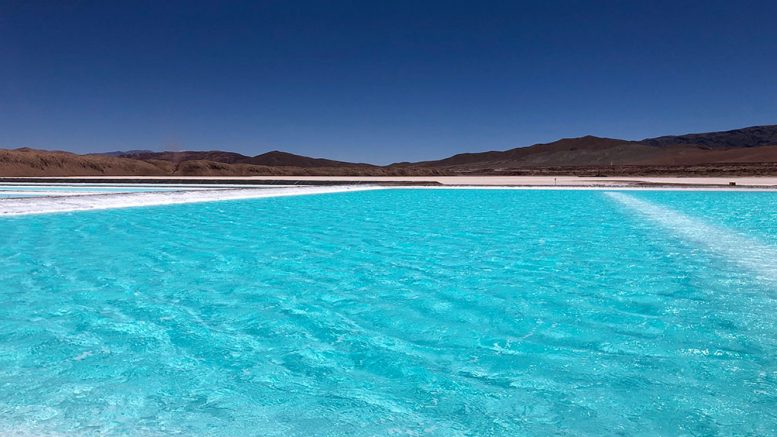Researchers at King Abdullah University of Science and Technology, a private research university in Saudi Arabia, have developed what they believe is an economically viable system to extract high-purity lithium from seawater.
Previous efforts to tease lithium from the mixture the metal makes together with sodium, magnesium and potassium in seawater yielded very little. Although the liquid contains 5,000 times more lithium than what can be found on land, it is present at extremely low concentrations of about 0.2 parts per million (ppm).
To address this issue, the team led by Zhiping Lai tried a method that had never been used before to extract lithium ions. They employed an electrochemical cell containing a ceramic membrane made from lithium lanthanum titanium oxide (LLTO).
In a paper published in the journal Energy & Environmental Science, the researchers explain that the membrane’s crystal structure contains holes just wide enough to let lithium ions pass through while blocking larger metal ions.
The cell itself, on the other hand, contains three compartments. Seawater flows into a central feed chamber, where positive lithium ions pass through the LLTO membrane into a side compartment that contains a buffer solution and a copper cathode coated with platinum and ruthenium. At the same time, negative ions exit the feed chamber through a standard anion exchange membrane, passing into a third compartment containing a sodium chloride solution and a platinum-ruthenium anode.
Lai and his group tested the system using seawater from the Red Sea. At a voltage of 3.25V, the cell generates hydrogen gas at the cathode and chlorine gas at the anode. This drives the transport of lithium through the LLTO membrane, where it accumulates in the side-chamber. This lithium-enriched water then becomes the feedstock for four more cycles of processing, eventually reaching a concentration of more than 9,000 ppm.
To make the final product pure enough so that it meets battery manufacturers’ requirements, the scientists then adjusted the pH of the solution to deliver solid lithium phosphate that contains mere traces of other metal ions.
According to the researchers, the cell will probably need $5 of electricity to extract 1 kilogram of lithium from seawater. This means that the value of hydrogen and chlorine produced by the cell would end up offsetting the cost of power, and residual seawater could also be used in desalination plants to provide freshwater.


Be the first to comment on "Scientists develop ‘cheap and easy’ method to extract lithium from seawater"